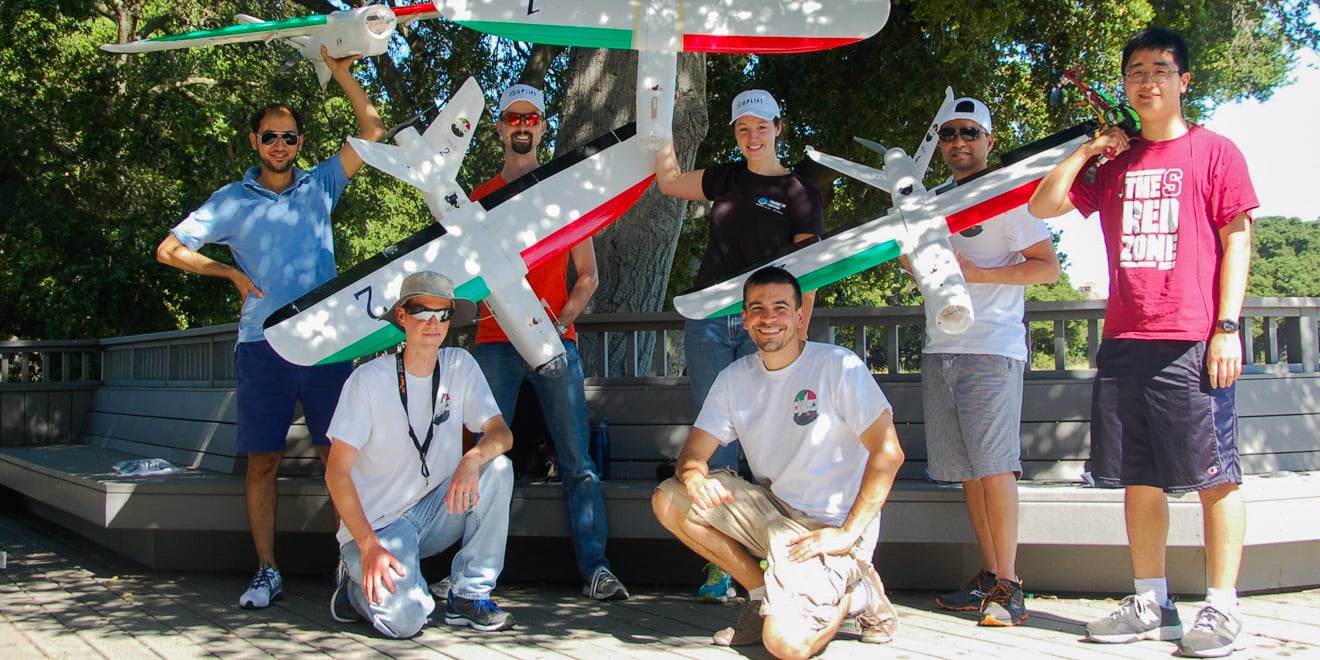Mark Jacobsen, a 33 year-old political science Ph.D. candidate and former Air Force C-17 transport pilot, is currently undertaking a project to send relief supplies to victims in Syria using small drones.
The effort, called the Syrian Airlift Project, was developed by Jacobsen after a visit to eastern Turkey in March of last year. There, he met with Syrian refugees and realized how vital aid was to the region.
Refugees often asked Jacobsen why the United States has not taken more action.
“The reason is you can’t get stuff in, or the big planes will get shot down, unless you go in guns blazing to destroy the air defense system,” Jacobsen explained. “So this really got me thinking about what are other ways you can get something in.”
Through this project, Jacobsen hopes to improve current conditions without requiring large shipments, or direct conflict. Drones could deliver food and other aid to designated GPS locations using small boxes attached to parachutes. Each box can carry up to two pounds. Though this cannot provide sufficient food for a whole neighborhood, it is enough to deliver medical supplies, as well as water filtration tools.
Eventually, Jacobsen hopes that the project team will be able to launch up to 30 drones per hour, tracking the movement of each drone on a laptop computer. The sheer quantity of packages would make up for the small size of each.
Jacobsen also emphasized the symbolic value of these drone deliveries, which would include candy airdrops for children.
“If you go do this, the message that it sends as it hits the ground is as important as the cargo,” he said.
The small size of the drones also makes them unlikely to be an enemy target. Even if they are shot down, they are fairly inexpensive to replace, making the system quite efficient, according to Jacobsen. Currently, the project has only run tests in the United States, but a pilot project will soon begin in Turkey. This past Sunday, Jacobsen’s team successfully flew drones over 130 kilometers, far enough to reach some of the most war-torn areas in Syria.
Jacobsen has expressed concern about the dangers presented by this program, including fallout from rebel groups who want to prevent aid from coming in. Many supplies delivered now are hoarded and stolen by hostile members. There is also still a lot of distrust regarding drone technology and associations with violence.
Because of this, Jacobsen plans to coordinate with humanitarian groups and provide transportation for the supplies these groups deem necessary.
“We will be talking to experienced groups who have connections on the ground,” he said.
When asked about potential dangers, including civilians being targeted because of aid packages, Jacobsen said he would continue to rely on the discretion of contacts in the area.
“If there is elevated risk, my view is that this is a decision that people on the ground need to make,” he says.
If humanitarian groups and aid workers in the area believe the benefits of delivering supplies outweigh the costs, Jacobsen said he trusts their judgment.
Though the Syrian Airlift Project presents one potential solution to Syria’s ongoing humanitarian crisis, several legal issues arise, including violating the airspace of sovereign nations. The United Nations does have exemptions to this rule because of humanitarian violations in Syria, but Jacobsen’s drones must get approval.
The Turkish government must agree to allow Jacobsen’s team to base the drones out of their country, flying the drones across international borders. Also, there are strict laws regarding exporting technology like drones to war zones, as well as US sanctions against Syria. The project team is working with the Syrian National Coalition, the resistance government, to provide relief.
Since coming to Stanford, Jacobsen’s implementation of the project has transformed.
“[Stanford] has given me the right network to do this,” Jacobsen said. “Mostly when I started this it was just me. I had a few friends, but no one had any technical experience.”
Now, eight Stanford students, as well as faculty advisors, are part of the team. Jacobsen found many willing members through Stanford’s Unmanned Aerial Vehicle club, SUAVE.
Though the Syrian Airlift Project’s current focus is providing aid in Syria, Jacobsen hopes that the technology can be implemented globally. Before the Nepal earthquake, Jacobsen had met with several Stanford students to discuss potentially using drones in Nepal because of the country’s low infrastructure and high probability of natural disasters. After the earthquake, these efforts became even more important to Jacobsen.
“This technology isn’t just for war zones, but for anywhere needing humanitarian relief,” he said.
Contact Sophie Stuber at sstuber8 ‘at’ stanford.edu.
